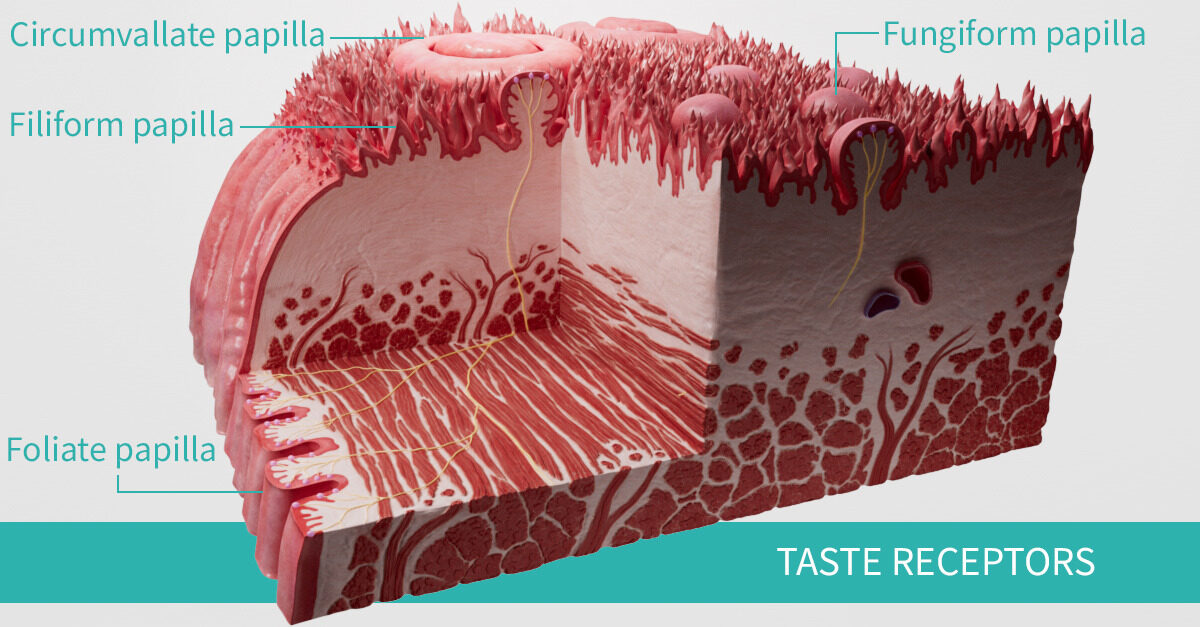
Have you ever seen an image of the tongue separating different regions to different flavors? This taste map designates areas such as the front to tasting sweet flavours. Meanwhile salty and sour are on the sides and bitter in the back. This mapping is however, a myth. In fact, chemosensory scientists debunked it long ago.
Instead of sectioning off these flavours to certain areas of the tongue, the receptors that pick up these tastes are located all over. It is true that the tip or edges of the tongue are especially sensitive to tastes. This is due to the concentration of tiny sensory organs called taste buds that are located there. Therefore, different parts of the tongue have varying thresholds for perceiving certain tastes, but the differences are small.
An average adult has anywhere from 2,000 – 10,000 taste buds. Taste buds can come in all different sizes, but the average in diameter is about one-thirtieth of a millimetre and a length of one-sixteenth of a millimetre. The taste buds on the tongue are in the form of little bumps called papillae. There are three different types:
Fungiform- located on the sides and tip of the tongue, and contain around 1,600 taste buds.
Foliate- located on the back portion of the tongue, on each side. About 20 of these and each contains several hundred taste buds.
Circumvallate- located on the back portion of the tongue. Contain around 250 taste buds.
Taste receptor cells are developed from basal cells every week or two. As we age, we see a decrease in taste buds. This means are perceptions of taste are ever changing. Hence, why when we get older we often start liking foods we once hated as children.
Check out more about the tongue in Complete Anatomy’s micro model!
